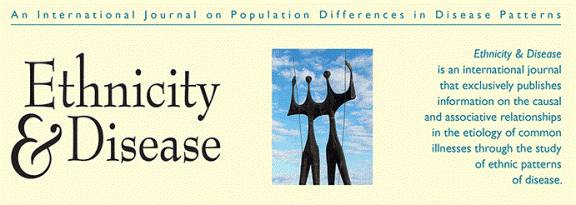NASHVILLE, Tenn. Thanks to Ethnicity & Disease, an international medical journal covering the relationship between ethnicity and health, the Precision Health and Health Disparities Collaborative’s (PMHDC) work will be even more visible to researchers and clinicians studying the ethnic patterns of disease. The collaborative effort of Vanderbilt University Medical Center (VUMC), University of Miami (UM), and Meharry Medical College (MMC) was featured in an April supplement published by the journal.
Making the publication happen
“Derek M. Griffith, PhD initially conceptualized and proposed the idea of a supplement to Ethnicity & Disease, given his role as one of the Co-Investigators of PMHDC and as an Associate Editor of the journal,” Anne M. Dubois, MWC, Managing Editor of Ethnicity & Disease recalled. “Consuelo Wilkins, PMHDC Lead PI, and Sarah Stallings took lead roles as guest editors for the supplement.”
In an independent discussion around the same time, the five centers of the National Institute on Minority Health and Health Disparities (NIMHD)-funded Transdisciplinary Collaborative Centers for Health Disparities Research Focused on Precision Medicine (TCC-PMs) decided that publishing a supplement as a group would bring forward the work being done across the centers. The ideas came together, and the three PMHDC members steered the collection of articles and oversaw the peer review of each article in the issue.
“Dr. Wilkins served as lead for a panel of six guest editors,” Dubois noted. “Sarah Bland, MBA, MPH, a PMHDC Project Manager at the time, served as Guest Managing Editor.”
Stallings, who serves as the Operations Lead for the PMHDC, commented, “We’d been considering the supplement idea as a collection of papers from the PMHDC alone, but when the group of centers decided that a trans-center effort could be a published supplement, the proposal with Ethnicity & Disease was an opportunity that could benefit the whole program.”
The publication’s goal
“This is the first collection of papers explicitly describing concrete efforts and findings that discuss the unique challenges and promise of using genomics and precision medicine to improve minority health and reduce health disparities,” Griffith noted. “This supplement represents a critical early step in research to utilize precision medicine to improve minority health and reduce health disparities.”
The supplement aims to expand the body of knowledge related to precision medicine. Specifically, it highlights the promise of precision medicine for reducing health disparities, identify efforts to understand drivers of health disparities that are addressable through precision medicine and provide evidence of early successes in this field for specific populations.
This special issue – “Precision Medicine Approaches to Health Disparities Research” – is dedicated to the cutting-edge research advancing precision medicine approaches addressing health disparities.
Future of the PMHDC
Health disparities result from a combination of social and economic factors. Institutional and systemic biases combine to create conditions that negatively impact health. Those biases carry over to the infrastructure for collecting clinical and biomedical research data that drive precision medicine.
“Whose lab results go into the averages that define ‘normal’ ranges?” Stallings asked. “Those of people with the health care access necessary to have lab tests performed.” She continued, “When looking at precision medicine with disparities knowledge, the question - Which groups are underrepresented here and how? - becomes clear.”
“It will take a change in the infrastructure of health care and of health care data collection for precision medicine to fulfill its promise, for health disparities understanding to become implemented solutions, and for health equity to become a reality,” Stallings said. “Achieving our goals in the PMHDC requires bridging the disciplines of precision medicine and health disparities“
The supplement, Stallings believes, points to ways in which the NIMHD initiative is working to build the necessary infrastructure for precision medicine and health disparities research to further health equity.
About the Meharry-Vanderbilt Alliance
Founded in 1999, the Alliance bridges the institutions of Meharry Medical College and Vanderbilt University Medical Center. Its mission is to enrich learning and advance clinical research in three primary areas -- community engagement, interprofessional education and research -- by developing and supporting mutually beneficial partnerships between Meharry Medical College, Vanderbilt University Medical Center and the communities they serve. Through community engagement, the Alliance serves a large community of stakeholders including surrounding universities and colleges, community organizations, faith-based outlets and community health centers. Its interprofessional education enhances students' interdisciplinary understanding and improves patient outcomes through integrated care. The research conducted provides access to experienced grant writers and materials supporting the grant application process and facilitates grant-writing workshops.
